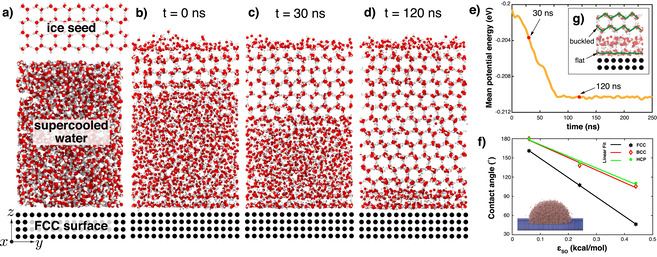Abstract
Ice accumulation on solid surfaces is a severe problem for safety and functioning of a large variety of engineering systems, and its control is an enormous challenge that influences the safety and reliability of many technological applications. The use of molecular dynamics (MD) simulations is popular, but as ice nucleation is a rare event when compared to simulation timescales, the simulations need to be accelerated to force ice to form on a surface, which affects the accuracy and/or applicability of the results obtained. Here, we present an alternative seeded MD simulation approach, which reduces the computational cost while still ensuring accurate simulations of ice growth on surfaces. In addition, this approach enables, for the first time, brute-force all-atom water simulations of ice growth on surfaces unfavorable for nucleation within MD timescales. Using this approach, we investigate the effect of surface wettability and structure on ice growth in the crucial surface–ice interfacial region. Our main findings are that the surface structure can induce a flat or buckled overlayer to form within the liquid, and this transition is mediated by surface wettability. The first overlayer and the bulk ice compete to structure the intermediate water layers between them, the relative influence of which is traced using density heat maps and diffusivity measurements. This work provides new understanding on the role of the surface properties on the structure and dynamics of ice growth, and we also present a useful framework for future research on surface icing simulations.
